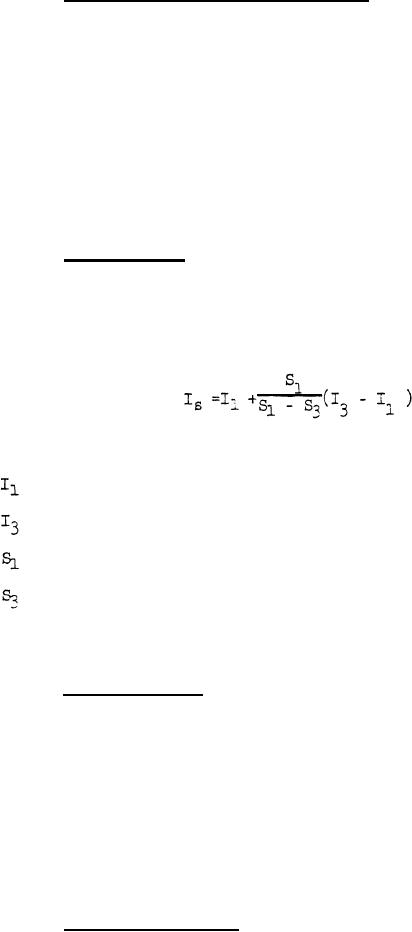 |
|||
|
Page Title:
Speed versus load at full voltage. |
|
||
| ||||||||||
|
|  MIL-M-82433A(OS)
4.7.3.5 Speed versus load at full voltage. The motor output shaft
shall be connected to the dynamometer, using a self-aligning coupling,
and thence to the tachometer or rpm counter. The motor shall be en-
ergized at 38.0 O.5 volts, the loading adjusted to 100 2 ounce-
inches and the resultant speed and current measured, for each rota-
tional direction. These speeds shall be greater than 83 percent of
the average no-load speed determined in 4.7.3.2. The same tests shall
be performed for loading of 300 6 ounce-inches. These speeds shall
be greater than 50 percent of the average no-load speed. In order
to minimize the effects of armature heating, the motor shall be sta-
bilized to room temperature before each trial. The application of
the load and data reading should be completed as expeditiously as pos-
sibly and certainly within 10 seconds.
4.7.3.6 Stall current. The motor current for stall condition shall
be determined, either graphically or by computation, as the linear
extrapolation of the currents measured in 4.7.3.5 at the 100 and 300
ounce-inch loads. The average of currents for the two directions
of rotation shall be used. For computation of stall current (I2)
the following formula shall be used:
where
= Average current at 100 oz-in.
=
Average
current
at
300
oz-in.
=
Average
speed
at
100
oz-in.
=
Average
speed
at
300
oz-in.
The value of stall current, determined as above, shall net exceed
3.3 amperes.
4.7.3.7 Motor stability. The purpose of this test is to prove the
stability of the permanent magnet field during repeated instantaneous
reversals ("plugging") of the motor at maximum input voltage. The
motor shall be instantaneously reversed with an input of 41.0 0.5
volts until at least 20 reversals have been made. The motor shaft
shall be uncoupled for this test. The motor shall accelaerate and run
for at least one second between successive reversals. The no-load
speed shall be determined prior to and after this test, using the meth-
od of 4.7.3.2. The "before" and "after" speeds shall be equal within
the accuracy of measurement. If both "after" speeds exceed the "before"
speeds by 1 rpm or more, the motor stability test shall be repeated,
but only once. The final speeds must meet the criteria of 4.7.3.2.
4.7.3.8 Motor time constant
24
|
|
Privacy Statement - Press Release - Copyright Information. - Contact Us |